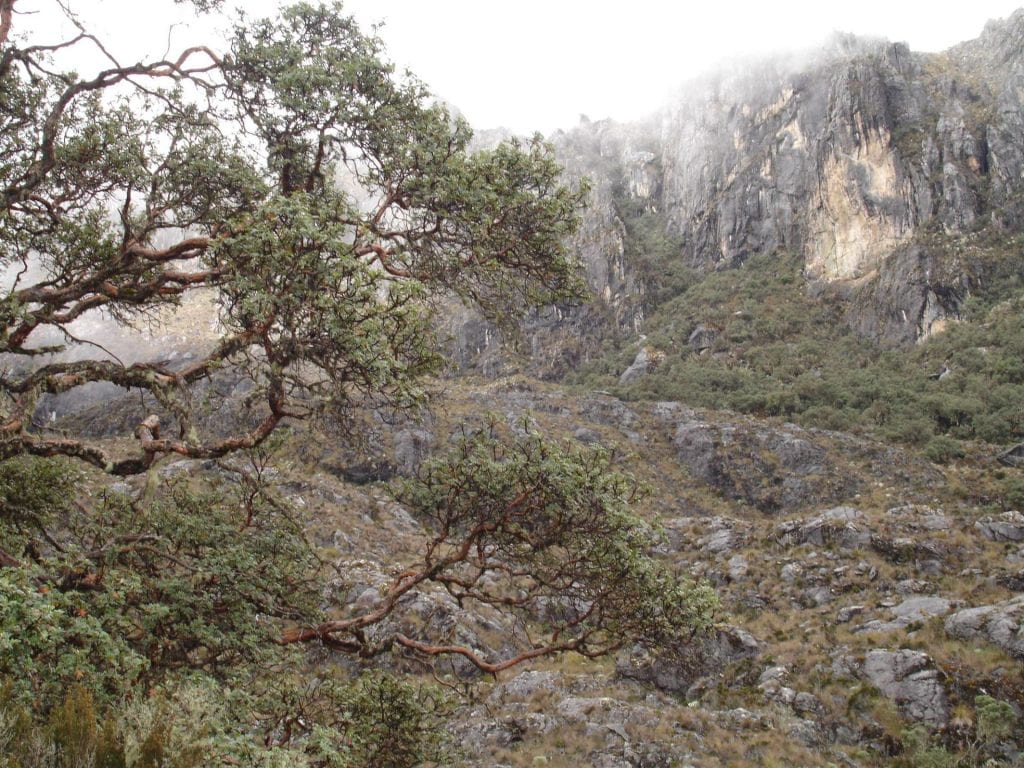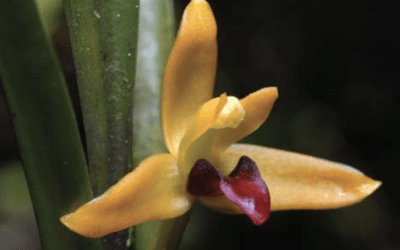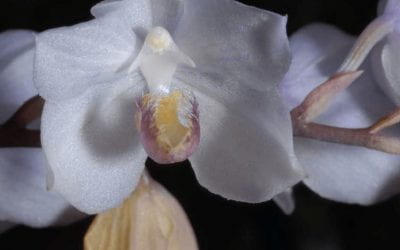Plants Under Stress in the Tropical High Andes
Learning from Venezuela and Beyond
Tropical mountains are privileged places for ecological studies. Going up and down the slopes, like the ones surrounding my home town of Merida, Venezuela, we may simulate changes in temperature. While moving from one slope to the next or moving along seasonal precipitation gradients, we may study plant responses to water availability. These studies have shed light on identifying possible climate change effects on vegetation. Since the early 80s, we researchers at the ICAE (Instituto de Ciencias Ambientales y Ecológicas) have been studying how plants in the páramos manage to survive under the extreme conditions there. As the 2007-08 Cisneros Visiting Scholar at DRCLAS, I am expanding my investigations about these plants, their behavior and environmental implications.
Plants around the world suffer from ambient stress. Among the many kinds of stress, two of the most severe are temperature and water availability. However, plants survive in extreme environments where temperatures may be well below freezing or excessively high, and in permanently flooded sites as well as exceptionally dry locations. Evolution processes have shaped plants through complex combinations of anatomical, physiological and morphological traits that have allowed them to adapt to extreme conditions.
Tropical high mountains are found along the equatorial zone above the natural limit of the continuous forest line (timberline) roughly at around 10,000 feet . Venezuela is one country in the tropical Andes that shelters these ecosystems, known as páramos. Ecuador and Colombia also have many páramos, and a few are found in Costa Rica, Panama and Peru. The páramos present very special climatic conditions. They have very little temperature change from season to season, but the variation in temperature in a single day can be extraordinary, like going from a hot summer day in Cambridge to the coldest winter climate in a period of 24 hours. For instance, plants growing at 13,000 feet in altitude may be subjected to temperatures below 5°F at night to above 104°F during the day. And more importantly, these freezing temperatures may occur any night of the year. Plants in temperate regions take advantage of a favorable growing season beginning in spring, while towards fall; a preparation phase is initiated to survive through the unfavorable winter months, mainly through leaf loss and dormancy. In contrast, páramo plants have to maintain resistance levels throughout the year to withstand low nighttime temperatures. At the same time, in general, páramos are subjected to seasonal variations in precipitation, therefore creating an important water stress during dry seasons that vary from one area to another.
We began by studying giant rosette plants known as frailejones, the most common plant in the páramos. Frailejoneshave many different species, but all sport a single stem with a rosette on top. They come in many sizes, from a few inches to 10 feet tall. Dead leaves cover each stem; living rosette leaves move inward to protect the bud at night. The role of both dead and living leaves is to provide very efficient mechanisms through which these plants maintain favorable temperatures during the cold nights. Rosette leaves are capable of maintaining unfrozen water in their tissues at very low temperatures, down to 0 °F in some cases. This capacity to maintain water in a liquid state at temperatures well below freezing, known as supercooling, is also found in other páramo plants. Most of the other plants studied, mainly forbs and grasses, together with some shrubs, tolerate ice formation in their leaf tissues. The freezing process occurs outside the cells, thus avoiding damage to inner cell membranes and organelles through the formation of ice crystals. Plants may freeze and thaw any night of the year and carry on their metabolic activity during the day.
Another plant formation which stands out along the Andes, from the páramos down to Argentina and Chile, are thePolylepis forests. About 26 different species belong to this genus, all of them trees growing well above the altitudinal limit of continuous forests. In the case of Polylepis tarapacana, the trees can thrive at altitudes of 17,000 feet above sea level. These are the tree species that grow at the highest altitudes in the world. In Venezuela, there is only one species, Polylepis sericea, which grows up to 15,100 feet, well above the continuous forest limit of 10,000 feet at this latitude. There are many hypotheses as to why trees don’t grow at higher altitudes. Understanding how Polylepis functions will let us understand the different characteristics trees need to be successful at higher altitudes.
In these last two and a half decades of research in tropical high mountain plant functioning, we have assembled a vast amount of knowledge on plant responses to the extreme conditions of these ecosystems. Understanding freezing resistance mechanisms, responses to water deficits and CO2 assimilation characteristics in different plant life forms; have helped us elucidate various aspects of these ecosystems. These climate extremes demonstrate the capability of plants to adapt to these very unique conditions. Moreover, these extraordinary features of adaptability provide us with the necessary information on possible climate change effects on these and other plant species. The páramos are a unique, but at the same time, very fragile ecosystems which require particular attention in order to protect them. And in the process of protecting them, we can learn much about the strategies for adaptation in this world of looming climate change.
Fermín Rada is currently a Cisneros and a Charles Bullard Fellow at Holbrook´s Laboratory, Department of Organismic and Evolutionary Biology, Harvard University. He has a Doctorate Degree in tropical ecology from the Universidad de Los Andes, Merida, Venezuela. His main area of research is plant physiological ecology.
Related Articles
A Review of Becoming Brazuca: Brazilian Immigration to the United States
Trying to define the community of Brazilian descendants who studied at Harvard University between 2001 and 2005, when I attended the college, was a maddening exercise. Some Crimson Brazucas—or Brazilian immigrants in the United States—affiliated with the broader community of Latino immigrants and participated in Concílio Latino or the annual pan-Latin cultural show, Presencia Latina (which I co-founded in 2002) …
Making a Difference: Taking on Tropical Diseases
Harvard School of Public Health (HSPH) students, along with their Brazilian counterparts, spent January studying and devising ways to control two tropical diseases endemic in Brazil: visceral leishmaniasis (VL) and schistosomiasis. During two intensive weeks in Brazil, students explored the epidemiological, biological, and clinical characteristics of selected infectious diseases, as well as the social, cultural, economic, and …
Collecting Orchids In the Venezuelan Orinco-Amazon Interfluvium
Orchidaceae are by far the largest family of all flowering plants, with species occurring all over the planet except in its very coldest and driest habitats. However, as is the case with most other living organisms, orchids are not evenly distributed. Most species grow in the tropics; as we approach the poles, their numbers diminish rapidly. The United States and Canada, for example, have approximately 208 species, Mexico, some 1250 species …





